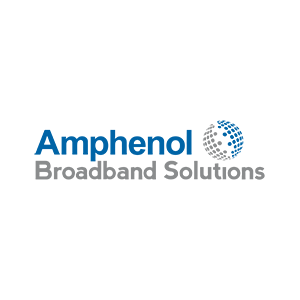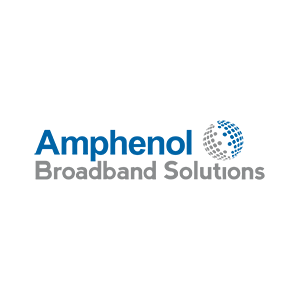Title Page
-
Client / Site
-
Audited By
-
Date and Time Audit Conducted
-
Location
I. AUDIT OPENING MEETING
-
Instruction:
----------------------
1. Answer all the questions and fields below.
2. Add photos and notes by clicking on the paperclip icon, if applicable.
3. To add a Corrective Action click on the paperclip icon then "Add Action", provide a description, assign to a member, set priority and due date.
4. Complete audit by providing digital signature.
5. Share your report by exporting as PDF, Word, Excel or Web Link.
I. AUDIT OPENING MEETING
-
Title
-
Purpose
-
Scope
-
DOCUMENTS
-
Click "Add Document"
Document
-
Title of Document
II. IMPROVEMENT - PREVIOUS AUDIT
II. IMPROVEMENT – PREVIOUS AUDIT
6.1, 10.2 & 10.3 Improvement
-
PAST ACTION REQUESTS
-
Corrective Actions
-
Was/Were Corrective Action(s) completed?
-
Preventive Actions
-
Was/Were Preventive Action(s) completed?
-
Risk Opportunities
-
Was/Were Risk Opportunity(s) completed?
-
OFIs
-
Was/Were OFI(s) completed?
-
Comments
-
Add media
III. QMS PROCESSES
III. QMS PROCESS
4.4 Quality Management System and its Processes
-
A. Verify that the following have been identified, defined and documented for the process being audited:
-
(i). Inputs and Outputs to the process
-
(ii). Criteria, method and performance indicators of the process
-
(iii). Resources needed for the process<br>
-
(iv). Risks and Opportunities in the process
-
B. Verify that the process has defined:
-
(i). Needed documented information to support its operation
-
(ii). Documented information to be retained as evidence that the process is being carried out as planned
IV. SUPPORT
IV. SUPPORT
A. RESOURCES
7.1.4 & 7.1.5 Environment for the operation of the process
-
(i). Is the process being audited providing and maintaining the work environment needed to achieve conformity to product and service requirements?
-
(ii). Has the process being audited determined the monitoring and measurement to be undertaken?
-
(iii). Has the process being audited determined the monitoring and measurement resources needed to provide evidence of conformity to determined requirements?
-
(iv). Are documented information maintained as evidence of fitness for the monitoring and measurement resources?
B. KNOWLEDGE, COMPETENCE, AWARENESS AND TRAINING
7.1.6, 7.2 & 7.3 Knowledge, Competency, Awareness and Training. Has TFC:
-
Use Auditee and Documents from above, determine if:
-
a. Is the knowledge necessary for the operation of the process determined, maintained, and available?
-
b. Has TFC determined the necessary competency for personnel performing work affecting product quality? Is there a job description for this job? (Check with HR)
-
c. Has TFC provided training or taken other actions to satisfy these needs? Ask the supervisor/Manager to show the Terms of Employment Form or HR to show the Training Sign-In Form to verify if employee training was signed off? (Reference the relevant section of the SOP for Competence, Training and Awareness)
-
d. Has TFC evaluated the effectiveness of the actions taken? Is there objective evidence of the person’s job performance in relationship to this procedure? Performance Review (Check with HR or if not applicable, then are they part of a success record?)
-
e. Ensured that employees are aware of the relevance and importance of their activities and how they contribute to the achievement of the quality objectives. What is the Quality Policy? Does the auditee know how they contributes to the areas goals?
-
f. Maintained appropriate records of education, training, skills and experience. (Check with HR)
-
g. Ensured that the record is legible, identifiable and retrievable? Did the department Manager have specific training records of the procedure the employee uses? (Reference the relevant section of the SOP for Competence, Training and Awareness).
-
h. Ensured that the records are maintained in the location and manner required by the training documents?
-
NOTE: Please see ISO Compliance Coordinator for any impediments that arise in this area.
C. DOCUMENTED INFORMATION
7.5 Control of Documents - Documents of Internal Origin
-
Use documents from above:
-
a. Ensure that relevant versions of applicable documents are available at points of use? <br> Do the user and trainees have access to this document where they would use it? (Reference the relevant section of the SOP for Documented Information)
-
b. Ensure that documents remain legible and readily identifiable.
-
Does the document contain (Reference the relevant section of the SOP for Documented Information)? Check the following:
-
Logo
-
Title
-
Department Manager Title
-
Page X of X
-
ISO 9001 Section
-
Document Number
-
Revision Level
-
Revision Date
-
Document Owner Title
-
Approved by Signature
7.5 Control of Documents - Documents of External Origin
-
a. Ensure that documents of external origin are identified and their distribution controlled? <br> Ask the auditee for a document of external control they have. <br> Is it kept in electronic format from the owner’s website? (Reference the relevant section of the SOP for Documents of External Source)
-
b. Preventing the unintended use of obsolete documents, and to apply suitable identification to them if they are retained? Ask the auditee to take you to the portal where he obtains the latest revisions. Do the copies revisions match? (Reference the relevant section of the SOP for Documents of External Source)
7.5 Documents and Standard Comparison
-
Using the ISO Standard excerpt, compare elements from the Standard to Sections in the QP and WI Documents. Write each discrepancy
-
Attach photo (if available)
7.5 Control of Records
-
Take the documents chosen, as specified by [Reference the relevant section of the SOP for Documented Information]. If available, pick two records and evaluate if:
-
A. Records have been established and maintained to provide evidence of conformity to requirements and effective operation of the procedure?
-
B. A documented procedure has been established to define the following control needs:
-
(i). Were the records clearly identified?
-
(ii). Is the storage secure?
-
(iii). Was retrieval easy?
-
(iv). Are they reasonably safe from tampering?
-
(v). Does the time retained call for in the document match its earliest record?
V. PROCEDURAL AUDIT
V. PROCEDURAL AUDIT
-
For Tier 2, 3 & 4 documents;
Ask the auditee how they perform the tasks of each document. Note discrepancy(s) on the copy of the document. Write each discrepancy between what the auditee does and what the document states. -
Any discrepancy(s) on the copy of the document(s)?
Click "Add Discrepancy(ies)"
-
Discrepancy
-
Attach photo (if applicable)
VI. AUDIT FINDINGS
VI. AUDIT FINDINGS
-
NC available?
-
Click "Add NC(s)"
NC
-
NC Description
-
NC status:
-
RA available?
Click "Add RA(s)"
-
RA Decription
-
RA Status:
-
OFI available?
Click "Add OFI(s)
-
OFI Description
VII. AUDIT REPORT APPROVAL
VII. AUDIT REPORT APPROVAL
-
Submission Date
-
ISO Compliance Coordinator: (Name & Signature)
VIII. AUDIT CLOSING MEETING
VIII. AUDIT CLOSING MEETING
-
Lead Auditor: (Name & Signature)
-
Auditor: (Name & Signature)
-
Process Owner: (Name & Signature)
-
Click "Add Auditee"
Auditee
-
Auditee: (Name & Signature)







